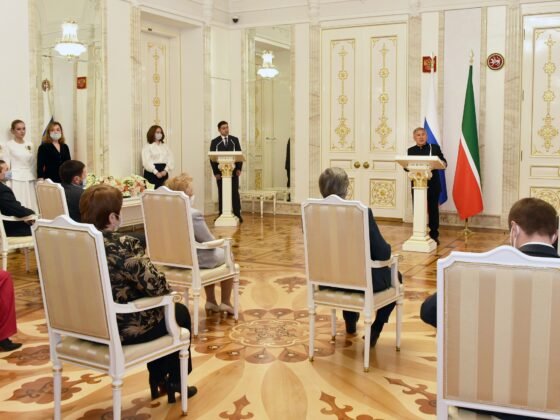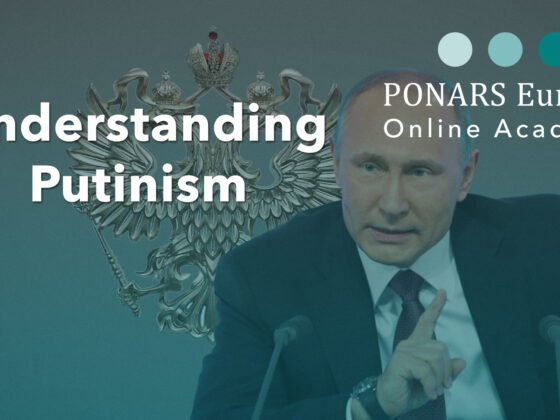(PONARS Eurasia Policy Memo) This year marks the thirtieth anniversary of Ukraine’s independence and thirty years of Ukrainian-U.S. diplomatic relations—a long road traveled together where the two parties have been good partners most of the time. Despite occasional differences and frictions, the overall balance is positive. The latest crisis, as such, took place in 2019 when former U.S. President Donald Trump applied pressure on Kyiv to gain domestic political advantages. But even that episode was relatively short and did not derail the character of the relationship and shared agenda. This year, relations resumed their sense of soundness; issues of corruption, governance, NATO membership, and illegal territorial occupation have returned from standby.
U.S. President Joe Biden has expertise in Ukraine and carries the high potential and capacity to help President Volodymyr Zelensky address Ukraine’s security and reform issues. Furthermore, if the United States is serious about addressing the threats that autocracies pose to democracies, as Ambassador William Taylor at the U.S. Institute of Peace writes, “supporting Ukraine should be a top priority.” Some assurance came during the first meeting of the U.S. and Ukrainian presidents in the Oval Office on September 1, 2021, when Biden confirmed his support for Ukraine’s territorial integrity and underscored $60 million in new military aid.
A New-Old-New Era
Occasional contentious flare-ups in the bilateral relationship have been due to objective and subjective reasons. On the former, the strategic realignment of the United States away from the post-Soviet space, which accelerated after 2001, lowered the significance of the Ukrainian dimension for Washington. There have always been discussions as to how significant Ukraine is for the United States. The current emphasis on China in Washington’s—and even Kyiv’s—strategic agenda diminishes Ukraine’s role in U.S. policymaking further.
As for the subjective reasons, what are the convictions, modus operandi, and perceived objectives of the policymakers on both sides shaping the connections? The Trump administration had sent conflicting messages through official and unofficial channels. Now, the Biden administration’s political-economic priority has been to restore U.S. partnerships with traditional U.S. allies. Thus, it was important for Washington to improve relations with Germany in particular, which led the United States not to block the completion of the Nord Stream 2 pipeline from Russia to Europe. For their part, top government officials in Kyiv often continue to make hazy calculations as to what they would like to achieve in working with Washington (funds and security assistance) and what they would rather not tackle despite U.S. encouragement to do so (reforms).
The good news is that Biden, U.S. Secretary of State Antony Blinken, and his European and Eurasian affairs leadership team are not new to dealing with Ukraine. In fact, there has hardly been a more knowledgeable president in foreign affairs in recent times. His comprehension of Ukraine specifically is noteworthy. Biden served on the U.S. Senate Foreign Relations Committee, and Ukraine was in his portfolio when he was vice president. During this time, he kept a close watch on Ukrainian domestic politics, visited the country multiple times, knew the major players, and prodded many for deeper and faster reforms. Volodymyr Zelensky is no match to Biden when it comes to mutual relations credentials, yet, he is not the complete political novice he once was. He has crossed some political pitfalls and survived the challenge of Trump’s attempted blackmail, which left lingering convictions that even Washington can lack reliability.
Western Assistance and Lagging Reforms
One reoccurring disconnect between Washington and Kyiv is Ukraine’s development priorities. Kyiv generally prefers to focus on cooperation in the fields of defense and security, even more so since 2014. As Mikhail Alexseev wrote in a recent policy memo, Ukrainians’ approval of relations with the United States is strongest when it helps protect their sovereignty and collaborate with NATO. Other assistance provided by the United States is appreciated, but Kyiv often decries the tags attached to it. There is a reluctance to accept that fundamental reforms and concrete steps in the fight against corruption, for example, are necessary assignments. Many question the (strong) link between Ukraine’s fight for sovereignty and the pace of its reforms. It is a belief in such a link that lies at the foundation of the current U.S. approach to Ukraine. Moreover, there is a consensus in Washington that Ukraine is stuck against two vital frontlines. One is preventing Russian encroachment (Donbas, Crimea, Black Sea) and the other is inside: the country’s puzzling political, economic, social, and legal structures.
The Ukrainian system is entrenched and resilient, even if we have a Ukrainian leader who would like to proceed with reforms alongside a steady ally of the United States. However, coalitions of plutocrats, oligarchs, and officials work together to unravel any changes to the status quo. Reforms are unsystematic and sporadic, with steps forward and backward. The familiar routine is for the West to nudge Ukraine in the right direction. Sometimes a gentle nudge is needed, while at other times, a profound push is called for. That being said, the depth of their cooperation has increased since 2014, particularly in defense and security—the Ukrainian military has strengthened noticeably, and financial assistance has been flowing to Ukraine on a regular basis.
Apart from the tense land border with Russia, one key focus area is maritime security. The Russian-Ukrainian conflict is as asymmetric on land as it is at sea. Although never formidable to start with, losing a large chunk of its navy in 2014 and having to relocate its basing and headquarters has been a major security challenge for Kyiv. Russian vessels attacked Ukrainian boats near the Kerch straits in November 2018, leaving the situation in the Azov and Black Seas tense. Ukraine is vulnerable to an attack from the seaside, and a potential blockade of its Black Sea ports would be a significant threat. Fortunately, the United States has worked with its allies and Ukraine to assess the maritime threats in this region. The United States has invested in Ukraine’s coast guard services. This year, two new coast guard stations with U.S. funding were opened at two of Azov’s ports, Berdiansk and Mariupol, and another is being built at Odessa. Allocating specific segments of U.S. defense assistance specifically for naval forces has yet to happen, but improving coastal defense capabilities is urgent, and so-called “island boats” and “mosquito fleets” are needed.
Ukraine’s Eastern Troubles Dominate
Against the backdrop of small steps forward and backward, Ukraine stands against a formidable opponent capable of a major escalation at any time. It happened this past spring when Russian troops amassed in huge numbers along Ukraine’s border, sending a signal to Ukrainian leaders and their allies in the West. The key recipient was notably the new U.S. administration, which did not blink and showed a strong response instead. A flurry of communications took place. Washington responded with some threats of “nuclear” sanctions but also an invitation to dialogue, culminating in the Biden-Putin summit in Geneva. Apparently, an emergency U.S. financial defense support package for Ukraine was prepared in case of further Russian escalation.
If this is a cycle, what are the other, possible, longer-term arrangements for Ukraine’s security? Apart from elusive, agreement-based solutions, it seems there is hardly a viable option for Ukraine strategically other than becoming part of NATO. However, Ukraine is not nearer to this strategic goal now than it was prior to 2014. The ongoing Russian aggression is a factor; it weighs on the thinking of a number of NATO member states, who ask themselves: why invite more aggressive behavior from Russia?
Conclusion
Zelensky saw the Normandy and Minsk processes lead nowhere. During his first two years in office, he tried to move a resolution on Donbas forward, but it failed. Lately, he has become a prominent advocate of the NATO membership perspective, increasingly seeing the issue as a function of Ukrainian-U.S. relations. Zelensky even asked Biden directly and awkwardly, “When will Ukraine be in NATO?” Nord Stream 2 was another high point of contention. The U.S. decision to go forward with it generated a backlash in Ukraine and elsewhere in Europe. Disappointment in Kyiv was understandable, yet Zelensky working himself into a frenzy about it was hardly helpful for the Ukrainian-U.S. relations he was in the midst of rebuilding. With that now past us, along with the Trump era of intrigues, we can look forward to many more years of constructive partnership.
Volodymyr Dubovyk is Professor of International Relations at Odessa Mechnikov University, Ukraine.
PONARS Eurasia Policy Memo No. 720











